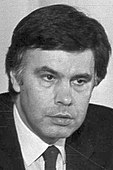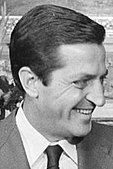Spanish municipal elections, 1987
|
|
|||||||||||||||||||||||||||||||||||||||||||||||||||||||||||||||||||||||||||||||||||||||||||||
|---|---|---|---|---|---|---|---|---|---|---|---|---|---|---|---|---|---|---|---|---|---|---|---|---|---|---|---|---|---|---|---|---|---|---|---|---|---|---|---|---|---|---|---|---|---|---|---|---|---|---|---|---|---|---|---|---|---|---|---|---|---|---|---|---|---|---|---|---|---|---|---|---|---|---|---|---|---|---|---|---|---|---|---|---|---|---|---|---|---|---|---|---|---|
|
|||||||||||||||||||||||||||||||||||||||||||||||||||||||||||||||||||||||||||||||||||||||||||||
|
65,577 seats in 8,063 local city councils 1,028 seats in 38 provincial deputations 153 seats in 3 Juntas Generales in the Basque Country 137 seats in 7 cabildos in the Canary Islands |
|||||||||||||||||||||||||||||||||||||||||||||||||||||||||||||||||||||||||||||||||||||||||||||
| Registered | 28,442,348 |
||||||||||||||||||||||||||||||||||||||||||||||||||||||||||||||||||||||||||||||||||||||||||||
| Turnout | 19,744,334 (69.4%) |
||||||||||||||||||||||||||||||||||||||||||||||||||||||||||||||||||||||||||||||||||||||||||||
|
|||||||||||||||||||||||||||||||||||||||||||||||||||||||||||||||||||||||||||||||||||||||||||||
The 1987 Spanish local elections were held on Wednesday, 10 June 1987, throughout all 8,063 Spain municipalities, simultaneously with regional elections in 13 of the 17 autonomous communities—all except for Andalusia, the Basque Country, Catalonia, and Galicia. All 65,577 councillors were up for election, as well as 153 seats of the 3 Basque Juntas Generales, 137 seats of the 7 Canarian cabildos and the indirectly-elected 1,028 seats of the 38 provincial deputations.
The number of seats in each city council was determined by the population count. According to the municipal electoral law, the population-seat relationship on each municipality was to be established on the following scale:
Additionally, for populations greater than 100,000, 1 seat was to be added per each 100,000 inhabitants or fraction, according to the most updated census data, and adding 1 more seat if the resulting seat count gives an even number.
All city council members were elected in single multi-member districts, consisting of the municipality's territory, using the D'Hondt method and a closed-list proportional representation system. Voting was on the basis of universal suffrage in a secret ballot. Only lists polling above 5% of valid votes in all of the municipality (which include blank ballots—for none of the above) were entitled to enter the seat distribution.
The Spanish municipal electoral law established a clause stating that, if no candidate was to gather an absolute majority of votes to be elected as mayor of a municipality, the candidate of the most-voted party would be automatically elected to the post.
...
Wikipedia




